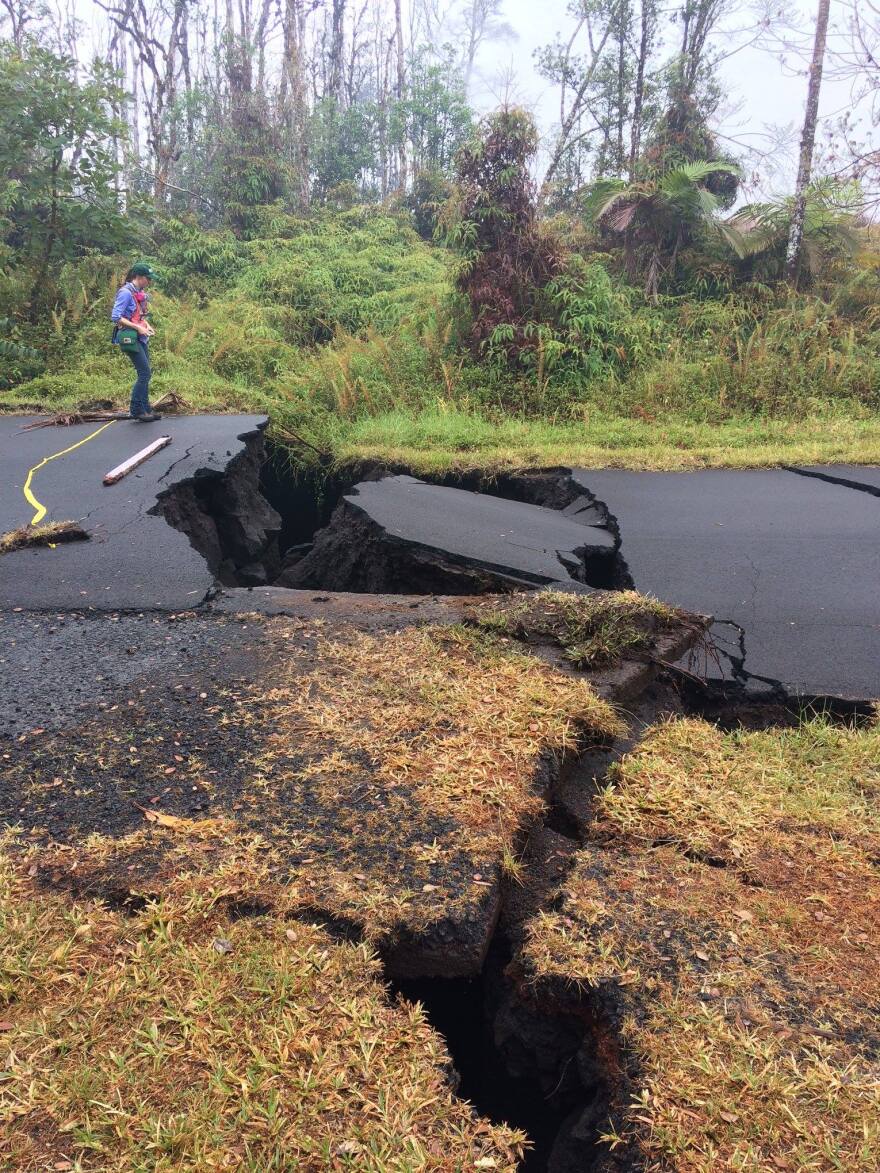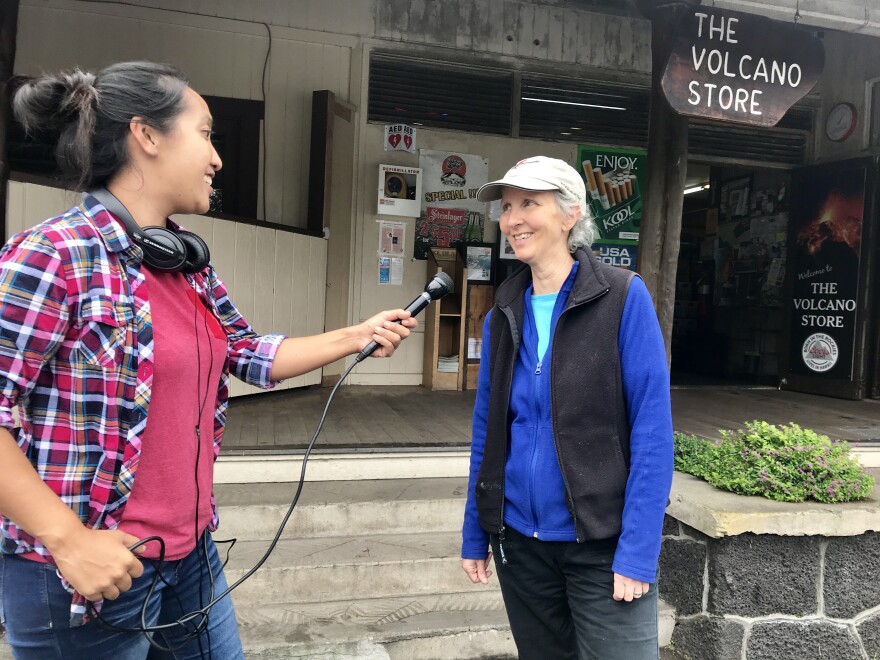Kilauea Volcano has been erupting for three weeks now, destroying 29 homes and covering more than 150 acres of land. But lava isn’t the only force that continues to threaten island residents. HPR Reporter Ku’uwehi Hiraishi has this story.
Earthquakes, ash, and toxic gas can be just as dangerous as the lava spewing from fissures in and around Leilani Estates.

These side effects of the volcanic eruption have displaced residents in surrounding communities.
“I had to move out. It was getting bad,” says Corina Espinosa, “I couldn?t. You know I had lung damage so it makes it really difficult for me to breathe down there.”
Spikes in sulfur dioxide levels have become too much to bear for the Black Sands resident. She?s been staying with family farther away from the SO2 for two weeks now.

Federal, state, and county government officials have been monitoring air quality at at least ten different sites along Kilauea?s East Rift Zone.
Here?s state department of health official Dr. Alvin Bronstein.
“With the gas especially, it is constantly evolving,” says Dr. Bronstein, “And so the concentration in the air may at one point be relatively low, and then 20 minutes after that, it could be high.”

Farther uprift at Volcano Village, Mauna Loa Estates residents Catherine Robbins and Tom Peek were at the Volcano Store checking on their neighbors.
They’ve already taken a number of preparations to protect themselves from anticipated ash fall. Their home is located three miles away from Halema?uma?u Crater.

“We’ve got both vehicles covered in plastic. We’ve got extra covering over the catchment tank,” says Robbins,” You know, of course, we’ve unplugged the drain pipe from the tank. So we’re separate there. We’ve put latches on all the kitchen cabinets.”
But it’s the shallow earthquakes that Peek says have really had an impact on their daily lives.

“When there was that 3.9, three or four blocks from our house, now that was a real shaker,” says Peek, “And that’s at the point where we took things off the wall.”
USGS scientists report hundreds of earthquakes this week – nearly 90 of them occurring yesterday alone. Frequent ash emissions also continue at the Kilauea summit as the lava lake at Halema?uma?u continues to subside.

“And the caldera has already subsided three feet. In 1924, it subsided something more in the order of 12 feet,” says Robbins, “So if it starts subsiding a lot more than six feet that would be our cue that this is going beyond 1924.”
The May 1924 crater eruption included more than 50 explosive events over a two and a half week period.

Nearly 30 miles south of the crater, 87-year-old Ku?ulei Evangelista and her family worry about the ashfall.
“Every morning, my children call me and they tell me how is it?” says Evangelista, “Check on the house. If it?s bad, no go out.”
Evangelista was picking up a protective mask at the Pahala Community Center.

The County has been distributing free masks to residents at community centers from Puna to Pahala.
Yesterday, the Hawaiian Volcano Observatory reported ash plumes at Halema?uma?u up to 8,000 feet high.

Pahala resident Cathy Pua walked out with ten masks.
“That’s for my family that’s why,” says Pua, “They’re all coughing.”
Dr. Bronstein warned these N-95 masks only protect people from inhaling ash, and do not protect against sulfur dioxide.
For updated information on the County's distribution of masks to protect residents from ash, click here.
Masks are currently being distributed Monday through Friday from 3:30 to 7:30 p.m. and Saturday from 9 a.m. to 1 p.m.
Where: Ocean View Community Center, Na'alehu Community Center, Pahala Community Center, Cooper Center (Volcano Village), and Shipman Gym in Kea'au.
There are 1,400 masks available at each site. Each person may receive up to three masks.




